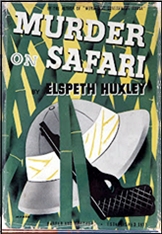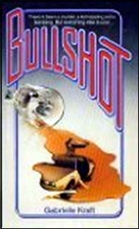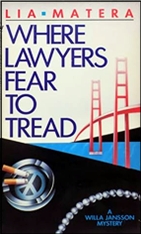A 1001 MIDNIGHTS Review
by Marcia Muller

ANTONIA FRASER – Quiet As a Nun. Jemima Shore #1. Weidenfeld ^ Nicolson, UK, hardcover, 1977. Viking, US, hardcover, 1977. Ace, paperback, 1978. Bantam, paperback, 1991. Norton, paperback, 1986. TV : A six-part version of the book appeared on ITV’s anthology series Armchair Thriller in the UK, 1978. Maria Aitken played Jemima Shore.
The heroine of this first novel by noted historian Antonia Fraser is Jemima Shore, Investigator — not a detective in the proper sense, but an investigative television reporter in London. Her show carries great influence, and it is on the strength of this that Jemima is summoned back to Blessed Eleanor’s Convent in Sussex, where she attended school.
Jemima was a Protestant, thrust into the convent world because of the “vagaries of her father’s career,” but her best friend, Rosabelle Powerstock, was a Catholic and later became a nun at the same convent.
Now Sister Miriam, as Rosabelle was called, is dead under strange circumstances, having starved to death in the black tower built by the founder of the order-a structure commonly referred to by the schoolgirls as “Nelly’s Nest.” People give the nuns strange looks on the streets of town; a cloud hangs over the convent; the air is full of suspicion and distrust; and the Reverend Mother Ancilla turns to Jemima to find out what is amiss.

Jemima is loath to revisit the scene of her childhood, but an aborted trip to Yugoslavia with her member of Parliament — and very married — lover makes her welcome a change of scene. She settles in at Blessed Eleanor’s in considerably more comfort than she enjoyed as a schoolgirl, but its charms fade when she hears strange footsteps at night, has a terrifying midnight encounter in the chapel, and discovers that politics, while very worldly, are not alien to these hallowed walls.
Jemima is an interesting character — a complex combination of a hard-driving career woman and a person who repeatedly binds herself into no-win situations with married men; she also has more than her fair share of skepticism about nuns and Catholicism.
The nuns, in their diversity, are also absorbing, and it is upon their hidden motives, passions, and beliefs that the plot turns. The unusual combination of the trendy contemporary world and the Gothic old convent gives a nice look at how such a place functions in the modern world.
Subsequent Jemima Shore novels are The Wild Island (1978), A Splash of Red (1981), and Cool Repentance (1982).
———
Reprinted with permission from 1001 Midnights, edited by Bill Pronzini & Marcia Muller and published by The Battered Silicon Dispatch Box, 2007. Copyright © 1986, 2007 by the Pronzini-Muller Family Trust.
The complete Jemima Shore series —
1. Quiet As a Nun (1977)
2. The Wild Island (1978)
3. A Splash of Red (1981)
4. Cool Repentance (1982)
5. Oxford Blood (1985)
Jemima Shore’s First Case (1986)
6. Your Royal Hostage (1987)
7. The Cavalier Case (1990)
Jemima Shore At the Sunny Grave (1991)
8. Political Death (1994)











